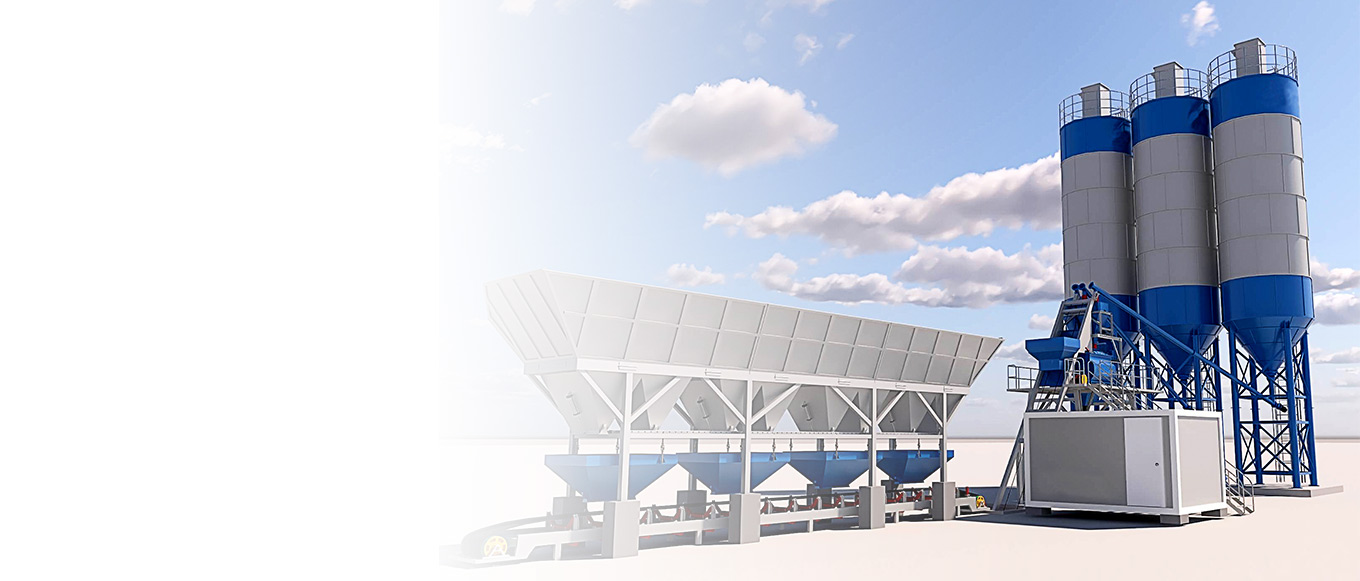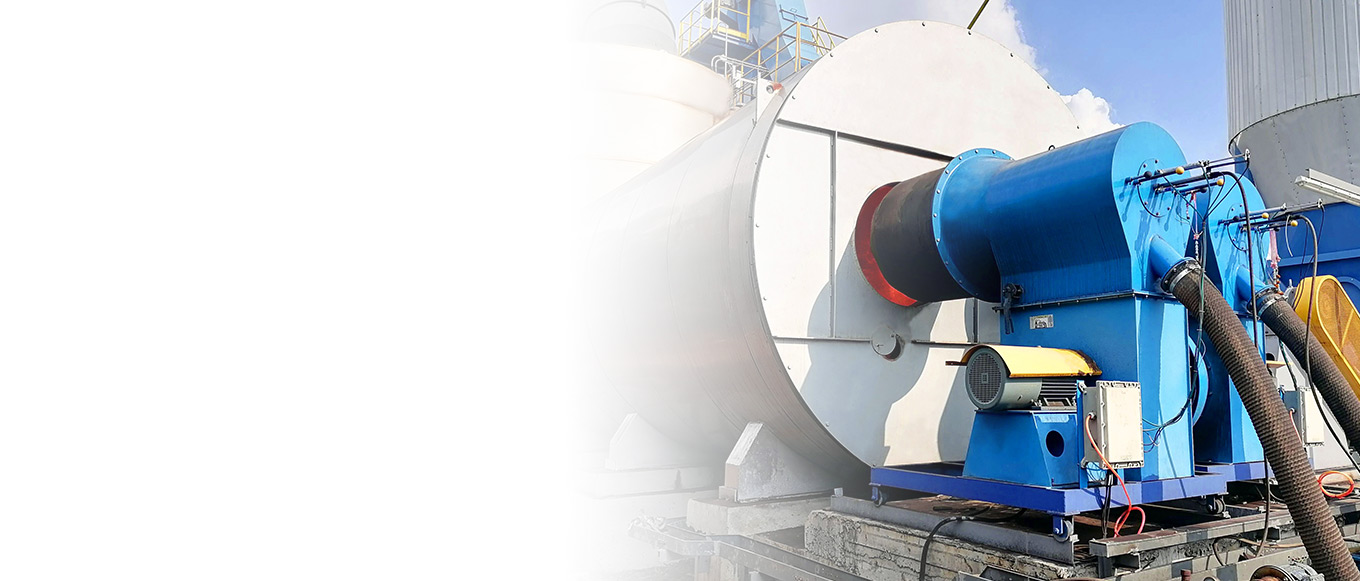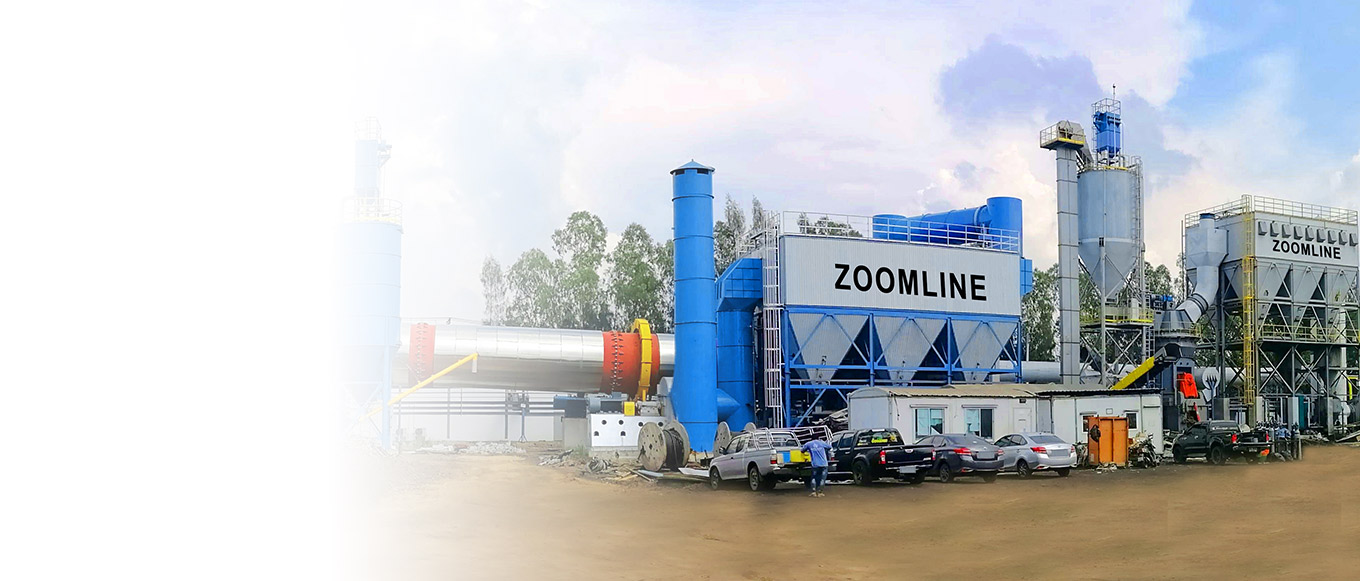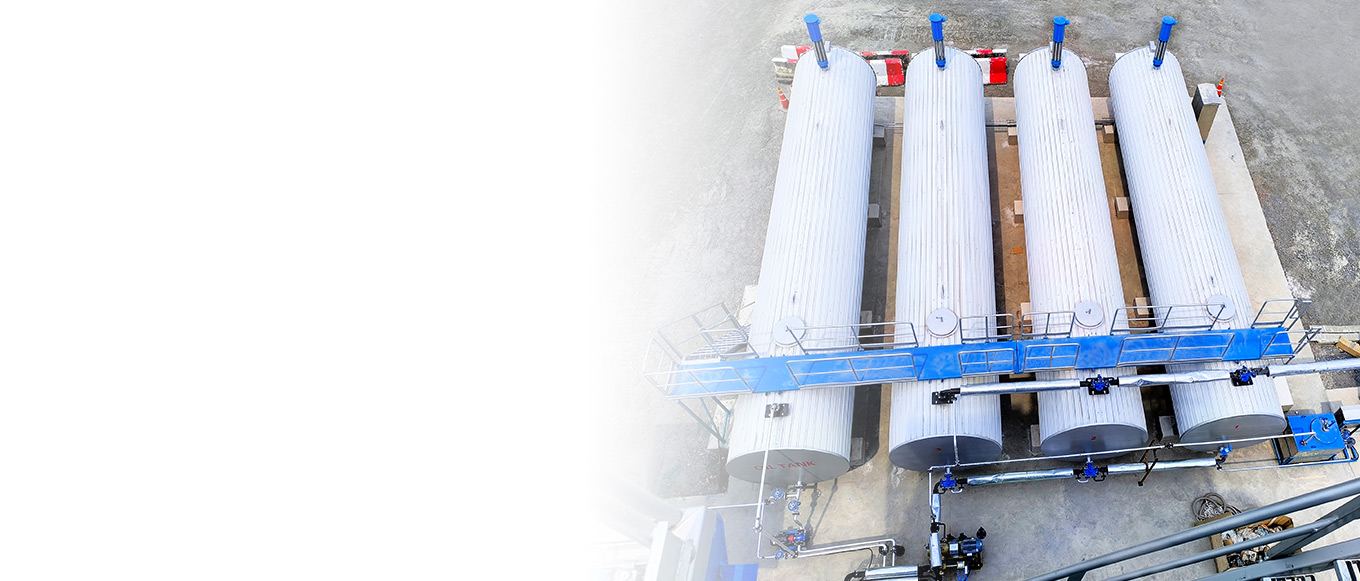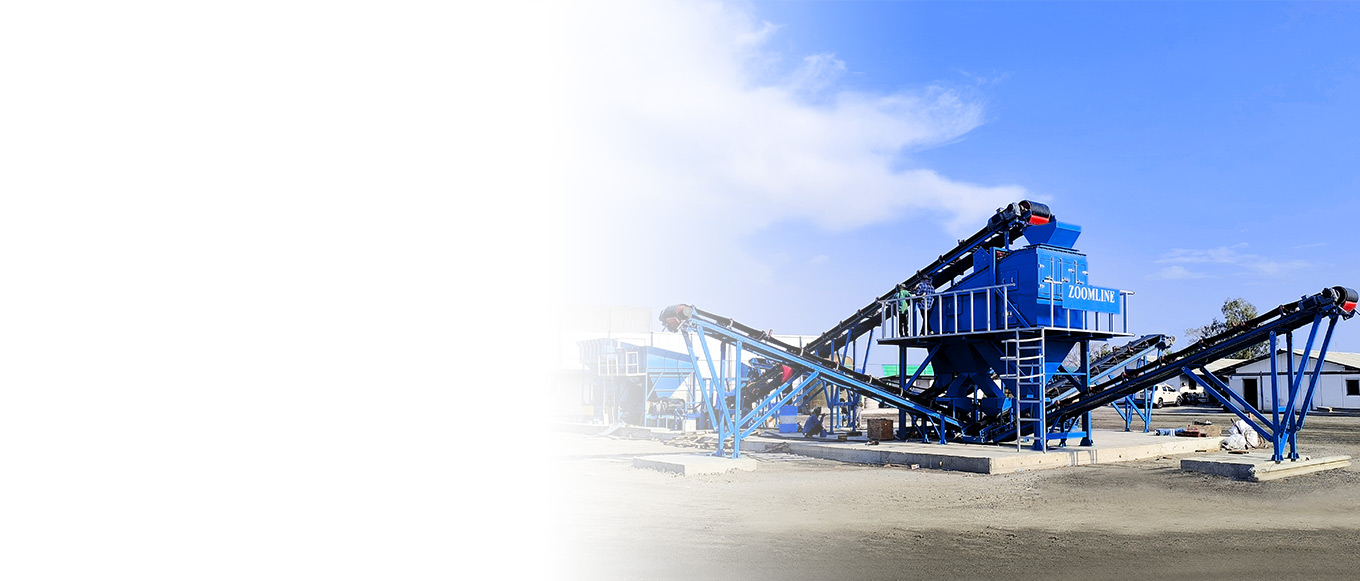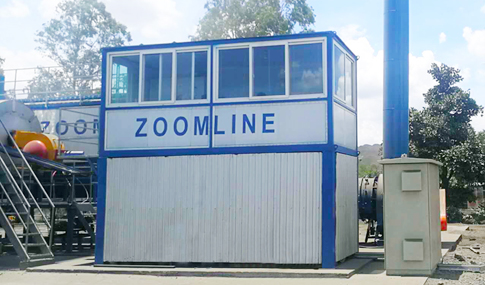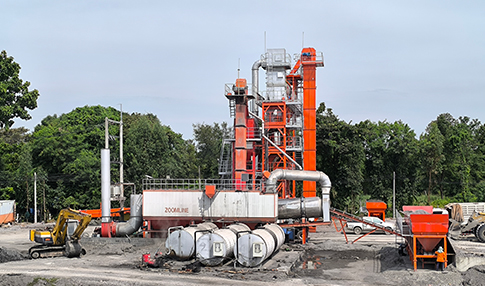Understanding the Core Value of the Asphalt Mixing Plant Cold Feeder
The Critical Role of the Cold Feeder in the Asphalt Production Process
As the “first checkpoint” of an asphalt mixing plant, the cold feeder is responsible for precisely delivering raw materials, such as sand, gravel, and aggregates, to the drying drum according to the correct mix ratio. In the continuous asphalt production process, it serves as the “feeding heart” of the entire production line. Its stable feed directly determines the efficiency of subsequent drying, screening, and mixing processes. Interruptions or uneven feed in the cold feeder can lead to fluctuations in drying temperature and imbalances in aggregate mix, further compromising the strength and durability of the final asphalt mixture. Therefore, it plays an irreplaceable role in ensuring production continuity.
The Core Importance of Proper Cold Feeder Maintenance: Ensuring Efficiency and Quality
Proper cold feeder maintenance is essentially a dual guarantee of production efficiency and product quality. From an efficiency perspective, regular maintenance can effectively reduce the frequency of equipment downtime due to sudden failures, avoid production interruptions caused by malfunctions, ensure production lines proceed as planned, and reduce lost time costs. From a quality perspective, a properly maintained cold feed machine consistently maintains precise feeding accuracy and uniformity, preventing imbalances in raw material ratios caused by equipment deviations, and laying the foundation for producing asphalt mixtures that meet specifications. Furthermore, scientific maintenance can reduce the wear rate of equipment components, extend their service life, and reduce investment in equipment replacements.
A Comprehensive Maintenance Guide from Routine to In-Depth
This article will develop a maintenance system covering the entire lifecycle of a cold feed machine, providing a comprehensive guide from the basics to in-depth, from routine to emergency situations. It will first explain the daily essentials of routine maintenance, including pre-startup inspections, in-service monitoring, and post-downtime cleaning. It will then detail the weekly, monthly, and quarterly periodic in-depth maintenance. It will then analyze common fault prediction and troubleshooting techniques. It will then address common maintenance pitfalls and how to avoid them. It will also explain the selection of essential tools and consumables. Finally, it will conclude with establishing a systematic maintenance system, providing comprehensive practical reference for practitioners.
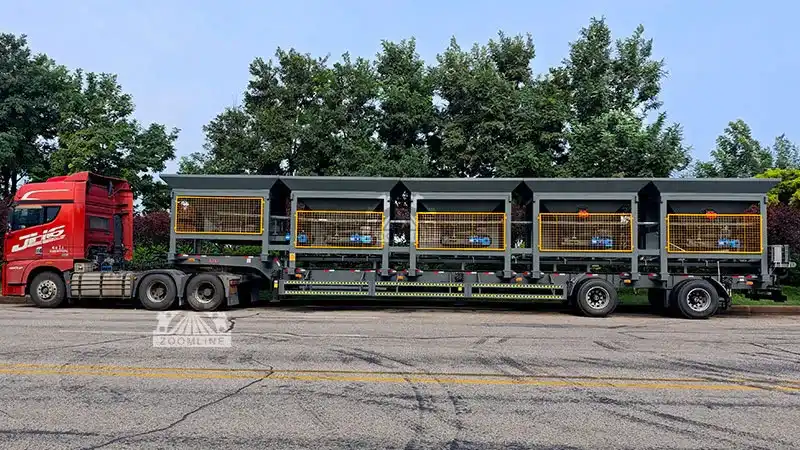
Daily Maintenance of the Cold Feed Machine: Essential Daily Maintenance
Pre-Startup Inspection Process
Visual Inspection of the Silo and Conveyor Belt: Carefully inspect the inner walls of the silo for any residual material clumps or adhesions, and inspect the silo for deformation or damage. Ensure the conveyor belt is free of tears, scratches, or fuzzing on the edges. Also, check the fit between the conveyor belt and the rollers to ensure there are no foreign objects blocking the conveyor belt.
Confirm the Condition of the Motor and Reducer: Observe the motor for oil stains and rust, ensure the terminals are secure and not loose, and ensure the cooling fan is in good working order. Inspect the reducer for signs of oil leakage at the seals, ensure the oil level in the oil level window is within the specified range, and ensure there are no unusual deposits on the surface.
Check the Grease Level at Lubrication Points: Verify the grease level at key rotating parts, such as bearings and chains, against the lubrication point locations indicated in the equipment manual. Check for signs of grease drying or deterioration, ensuring that each lubrication point has sufficient lubrication. Key Points for Real-Time Monitoring During Operation Observing Feed Speed and Material Uniformity: Observe the material distribution on the conveyor belt surface to determine whether the material is evenly fed and whether there are any localized accumulations or gaps. Compare this to the set feed speed parameters to confirm that the actual feeding rhythm is stable and does not fluctuate significantly.
Identifying Abnormal Equipment Operating Noise and Vibration: During operation, listen to detect any abnormal noises, such as sharp friction or impact, and compare them with the sound during normal operation. Feel the motor, reducer, and other parts to determine if the vibration amplitude exceeds the normal range and if there are any sudden increases in vibration.
Real-Time Monitoring of Motor Temperature and Current: Use a thermometer to regularly measure the motor casing temperature to ensure it does not exceed the specified maximum temperature limit (typically no more than 80°C). Use the ammeter in the distribution box to monitor the motor operating current in real time to confirm that it is within the rated range and is not overloaded. Cleaning and Tidying Up After Shutdown
How to Clean Residual Material in the Silo: After shutdown, promptly open the cleaning door at the bottom of the silo and use a special scraper or high-pressure air gun to clean any remaining material. Be especially careful to remove any clumping in the corners of the silo walls to prevent hardened material from affecting feeding accuracy the next day. Close and lock the cleaning door after cleaning.
Tips for Cleaning the Conveyor Belt Surface: After the conveyor belt has completely stopped, wipe the belt surface with a damp cloth to remove dust and fine particles. For tightly adhered stains, use a neutral detergent and gently wipe, avoiding scratching the belt surface with sharp tools. Also, clean any accumulated material from the baffles on both sides of the conveyor belt.
Tips for Tidying Up the Equipment Surroundings: Collect and transport any remaining material to a designated location. Do not allow it to accumulate around the equipment. Arrange tools and consumables near the equipment, ensuring they are neatly arranged. Clean the floor around the equipment to maintain a clean and tidy working environment and minimize dust damage to the equipment.
Regular Maintenance of the Cold Feed Machine: Periodic Deep Maintenance
Weekly Maintenance List
Check the Tightness of Bolts at All Connections: Use a wrench to inspect all connections, including the silo bracket, motor base, reducer mounting bolts, and conveyor roller bearing seat bolts. Tighten any loose bolts immediately. Repeatedly loosening bolts should be inspected for thread damage and replaced if necessary.
Adjust and Calibrate the Conveyor Belt Tension: Observe the conveyor belt during operation to determine if the tension is appropriate (press the center of the belt manually and expect no more than 10-15mm of deflection). If the tension is insufficient, adjust the tensioning screw to gradually tighten the belt. If it is too tight, loosen it appropriately to prevent damage from excessive stretching.
Lubricate Bearings and Other Rotating Parts: Use a grease gun to fill rotating parts, such as rolling bearings and sliding bearings, with the appropriate type of grease. Fill only enough to allow the grease to slightly overflow from the bearing gaps. Clean any old grease and debris around the lubrication points to ensure effective lubrication. Monthly Maintenance Core Content
Replacing and Quality Inspection of Reducer Lubricant: First, drain all old lubricant from the reducer. After flushing the reducer interior with kerosene, add new lubricant of the specified type as specified in the equipment manual until the oil level window indicates the oil level is within the specified range. Take a small amount of the old oil and inspect it. If it appears black, emulsified, or contains metal debris, inspect the reducer for wear.
Adjusting the Feed Gate’s Flexibility: Manually adjust the feed gate’s opening to check for smooth lifting and lowering, and for any sticking. Use a feeler gauge to measure the gap between the gate and the silo outlet to ensure a uniform gap and no leakage. Lubricate the gate’s transmission mechanism to ensure accurate adjustment.
Insulation Inspection of Electrical Circuits: Disconnect the equipment’s main power supply and use a megohmmeter to test the insulation resistance of the motor windings and the wiring within the electrical control cabinet to ensure that the insulation resistance meets electrical safety standards (typically, the motor winding insulation resistance should be no less than 0.5MΩ). Inspect the wiring connectors for oxidation and looseness, and address any potential hazards promptly. Quarterly Maintenance Key Tasks
Inspect and repair silo inner wall wear: Enter the silo (safety precautions must be taken) and carefully inspect the wear-resistant lining of the silo for wear and loss. Use a caliper to measure the lining thickness and promptly replace any lining with excessive wear. Repair any scratches or dents on the silo inner wall to prevent material accumulation.
Comprehensive performance inspection of the motor and reducer: Remove the motor end cover, inspect the stator and rotor for debris, and check the wear of the carbon brushes (if any). Replace any severely worn ones. Disassemble and inspect the reducer, check the gears and bearings for wear, clean any internal impurities, refill the lubricant, and test the operating noise.
Interconnected test run of the entire feeding system: Conduct an interconnected test run of the cold feeder and subsequent process equipment to test the feeding system’s operation under different loads and verify the feed speed’s compatibility with subsequent processes. Observe the smoothness of equipment startup and shutdown to ensure smooth operation of the entire system without any connection problems.
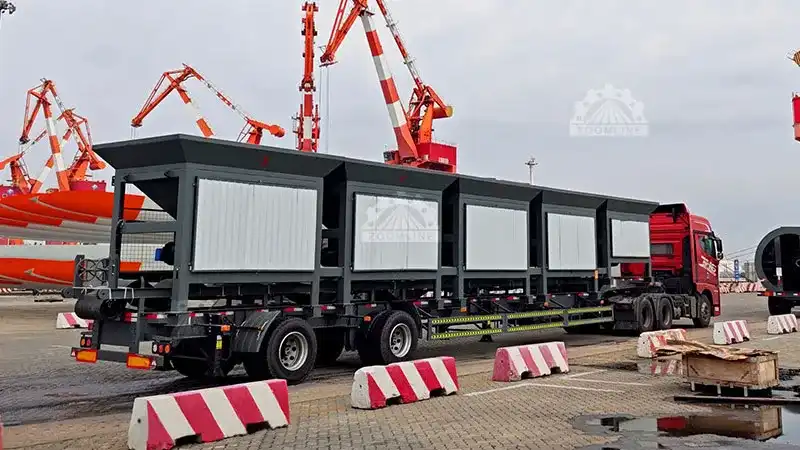
Predicting and Addressing Common Faults: Emergency Maintenance Techniques
Causes and Solutions for Uneven Feeding
To address material agglomeration or blockage: First, immediately shut down the machine and disconnect the power. Open the silo cleaning door and use a crowbar or high-pressure air gun to break up the agglomerated material and gradually clear the blockage. If the blockage is severe, disassemble some silo components for cleaning. After cleaning, inspect the silo interior and install anti-sticking lining if necessary.
Adjustment Plan for Conveyor Belt Deviation Leading to Abnormal Feeding: If the conveyor belt is deviating to one side, shut down the machine and observe the direction of deviation. Adjust the roller bearing bolts on the corresponding side. If it is deviating to the left, tighten the left bolts or loosen the right bolts as needed. Make small adjustments multiple times, and perform a test run while adjusting until the conveyor belt returns to center position. Calibration Method for Improper Gate Opening: First, measure the deviation between the actual feed rate and the set value. Adjust the gate opening accordingly. After adjustment, run the machine for 5-10 minutes and measure the feed rate again. If the target is not met after multiple adjustments, check the gate transmission mechanism for obstructions, clean any impurities in the transmission components, add lubricant, and recalibrate.
Troubleshooting Process for Abnormal Equipment Operation
Location and Resolution of Mechanical Friction Noise: Use a stethoscope or a long screwdriver to closely locate the noise by placing it against various equipment components (motor, reducer, roller, etc.). If the noise is caused by bearing friction, disassemble the bearing, inspect it, replace any worn bearings, and relubricate. If the noise is caused by friction between the roller and the conveyor belt, adjust the roller’s position or remove any foreign matter from the roller surface.
Treating Noise Caused by Insufficient Lubrication: After determining that the noise originates from a rotating component, stop the machine and inspect the lubrication status of the corresponding parts. If the grease is dry or insufficient, clean out the old grease and add a suitable new grease. If the lubrication is insufficient due to a clogged lubrication channel, clear the channel to ensure that the grease can reach the lubrication points smoothly. Tightening tips for loose components causing abnormal noise: Based on the location of the abnormal noise, check surrounding bolts, nuts, and other fasteners and tighten them one by one using an appropriate wrench. For connections in areas with high vibration, add spring washers or lock washers to prevent further loosening. After tightening, test run the motor to confirm that the abnormal noise has disappeared.
Emergency Treatment for Motor Failure
Analysis and Cooling Methods for Motor Overheating: First, check the motor cooling fan for damage and blockage of the cooling vents. Clean the vents or replace the fan. If overheating is caused by overload, immediately reduce the feed load and check the conveyor belt for obstructions to eliminate the overload. If necessary, use an industrial fan to force cool the motor and resume operation after the temperature returns to the normal range.
Troubleshooting Steps for Motor Failure: First, check whether the power switch is tripped and the wiring terminals are loose. Restore power or tighten the wiring. If the power supply is normal, check the insulation resistance of the motor winding to determine if there is a short circuit or ground fault. Also, check the contactors and relays in the control circuit for faults and replace any damaged electrical components. Countermeasures for abnormal motor vibration: After shutdown, check whether the motor base bolts are loose and tighten them in time; remove the motor end cover, check whether the rotor is unbalanced and whether the bearings are worn, perform dynamic balancing correction on unbalanced rotors, and replace worn bearings; if the coaxiality deviation between the motor and the reducer is too large, adjust the position of the two to ensure that the coaxiality meets the requirements.
Common Mistakes in Maintenance and Avoidance
Common Mistakes in Lubrication and Maintenance
The Dangers of Improper Lubricant Selection and Avoidance: Using an inappropriate lubricant can reduce lubrication effectiveness, increase component wear, and even cause component seizures. Avoidance measures include strictly selecting lubricants according to the equipment manual, recording the lubricant type and replacement cycle, purchasing through reputable channels, and avoiding inferior grease.
Solution to Irregular Lubrication Cycles: Lubrication cycles that are too long or too short can affect equipment operation. A long cycle results in insufficient lubrication, while a short cycle results in grease waste. The solution is to develop a detailed lubrication schedule that clearly defines the lubrication cycle and refill volume for each lubrication point. Assign a dedicated person to oversee lubrication and maintain records. Regularly check lubrication effectiveness and fine-tune the cycle based on actual operating conditions.
Commonly Overlooked Cleaning Tasks
Mistakes in Cleaning Residual Material from Silo Dead Corners: Some maintenance personnel only clean visible residue from the bottom of the silo, neglecting dead corners such as the corners of the silo wall and the junction between the gate and the silo. Residual material in these dead corners can gradually harden, affecting feeding accuracy and even corroding the silo. To address this issue, make a dedicated cleaning tool (such as a long-handled scraper) and thoroughly clean any blind spots after each shutdown. Regularly open the inspection door to inspect the silo.
The Importance and Methods of Cleaning Conveyor Belt Joints: Dust and fine particles easily accumulate at conveyor belt joints. Failure to clean these joints can lead to increased wear and shorten the life of the conveyor belt. After shutting down, thoroughly scrub the joint gaps with a brush dipped in neutral detergent, then wipe clean with a damp cloth. Avoid using a high-pressure water jet to directly flush the joints to prevent debonding.
Reminders for Missing Points in Equipment Inspection
Blind Spots in Electrical Terminal Inspection: During maintenance, focus on the main wiring between the motor and control cabinet, but overlook minor looseness or oxidation of the terminal blocks. These problems can lead to poor contact and malfunction in the motor. Use a screwdriver to inspect all terminals monthly. Tighten any loose areas immediately. Sand any oxidized areas with fine sandpaper and apply conductive paste.
Overlooked Inspection of Reducer Seals: Deterioration of reducer seals can lead to lubricant leakage, affecting lubrication effectiveness. However, seals are located inside the equipment and are easily overlooked. It is necessary to regularly observe whether there are signs of oil leakage on the surface of the reducer, and dismantle the seals for inspection every quarter. If cracks, decreased elasticity or other aging phenomena are found in the seals, new seals should be replaced in time.
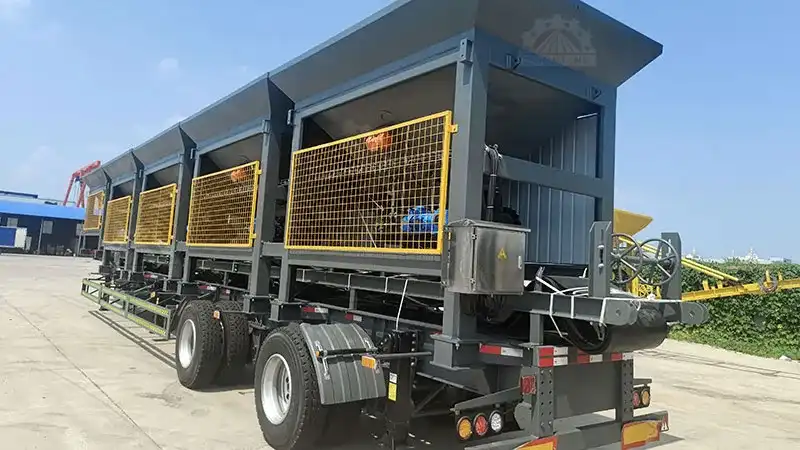
Tools and Consumables for Cold Feed Machine Maintenance
List of Required Maintenance Tools and Usage Guidelines
Testing Tools: Thermometer, Ammeter, Vibration Detector: Use an industrial-grade thermometer with a range of 0-200°C. Hold it close to the motor, reducer, or other device under test, and wait for the value to stabilize before reading. The ammeter must match the rated current of the equipment and be connected in series with the circuit to avoid exceeding the rated current. The vibration detector must be calibrated before use. Hold the probe close to the device under test and record the vibration frequency and amplitude.
Maintenance Tools: Wrenches, Screwdrivers, Lubrication Gun: Prepare a variety of wrenches, including socket wrenches and open-end wrenches. Select the appropriate wrench based on the bolt type, and avoid applying excessive force, which may damage the bolt. Use an insulated screwdriver with a magnetic tip to prevent electric shock and loosening the screw. The lubrication gun must match the type of lubricant. When filling, ensure that the gun tip fits tightly against the lubrication point to prevent grease leakage.
Core Consumables Selection and Storage Tips
Lubricant Type and Storage Conditions: Select the appropriate lubricant according to the equipment manual. For example, use high-temperature grease for high-temperature areas, and rust-resistant grease for humid environments. Store in a sealed, cool, dry place away from direct sunlight and rain. Store different types of grease separately, labeled with the model and purchase date, and use on a first-come, first-served basis.
Selection Criteria for Consumable Parts (Conveyor Belts, Seals, etc.): Choose a conveyor belt with the appropriate thickness and strength based on the feed rate and material characteristics, ensuring compatibility between the belt material and the material (e.g., wear-resistant for conveying sharp aggregates). Seals should be consistent with the type of reducer, bearings, and other components. Oil-resistant and aging-resistant materials are preferred. Store in a dry, well-ventilated area, avoiding compression.
Establish a Systematic Maintenance System to Extend the Life of the Cold Feeder Machine
Key Elements of Developing a Customized Maintenance Plan
Developing a customized maintenance plan requires considering factors such as the cold machine’s model and specifications, frequency of use, material characteristics, and operating environment. For equipment with high usage or handling hard materials, shorten maintenance intervals and increase the frequency of lubrication and wear inspections. For high-temperature and dusty operating environments, strengthen maintenance of cleaning and cooling systems. Furthermore, the plan should clearly define maintenance responsibilities, workflows, and acceptance criteria to ensure that maintenance work is implemented and traceable.
Standardized Maintenance Record Completion and Data Analysis
Maintenance records should detail the date, content, identified issues, and resolution of each maintenance session. This should include temperature and current data from routine inspections, as well as component wear and replacement records from scheduled maintenance. Maintain both electronic and paper records and regularly analyze these data. By comparing changes in equipment operating parameters, potential failure risks can be predicted, providing data support for optimizing maintenance plans.
Combining Professional and Routine Maintenance
Routine maintenance is the foundation for stable equipment operation. Frontline operators must perform it daily according to specifications to ensure the equipment is in good condition. Professional maintenance, performed by technicians on a periodic schedule, involves in-depth inspections and troubleshooting. A coordinated “routine maintenance + professional maintenance” mechanism should be established. Operators should promptly report any anomalies, while technicians should regularly inspect and provide guidance on the quality of routine maintenance. This effective combination of the two ensures comprehensive and refined equipment maintenance, maximizing the lifespan of the feed cold feeder.
Summary
Scientific maintenance of the cold feeder is not only fundamental to ensuring production efficiency but also a crucial measure for enterprises to control costs and extend equipment life. Only with a systematic maintenance system and the support of a professional team can stable and efficient asphalt production be truly achieved.


